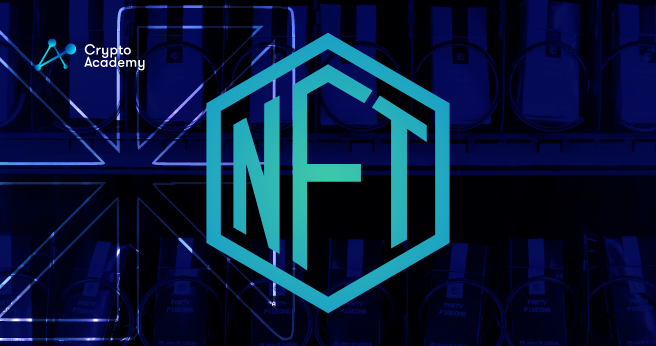The world’s first NFT vending machine was recently launched in New York City, NY.
Non-fungible Tokens (NFTs) are still considered one of the most profitable assets of the century. People are buying NFTs no matter how the market is performing. While the most-used NFT marketplace is the ETH-based OpenSea, the latter faced plenty of regulation issues in the last few months. Hence, NFT investors are constantly looking for better marketplaces.
Neon, which is a Solana-based NFT marketplace went live recently. A few weeks back, Neon managed to raise $3 million in its seeding round. While it seemed to have nothing special at first, Neon came up with a groundbreaking innovation that can make crypto mass adoption much more attainable.
Neon is the first NFT marketplace to offer its services physically. It launched the first-ever NFT vending machine, making it the first real-life NFT marketplace in the world. The vending machine is located in Manhattan. While the concept was introduced in December of 2021, it is now available for use 24/7.
The idea came from Neon’s co-founder Jordan Birnholtz and a Neon Labs summer intern Drew Levine. Usually, innovations of such nature derive from daily problems that people face. In terms of NFTs, they are not as accessible to people as other virtual goods. Hence, Birnholtz and Levine brainstormed a way to bring NFTs one step closer to the real world.
The best part of it all s that people can pay with credit cards, either Visa or MasterCard, as well as with Samsung or Apple Pay. Once paying for the NFT, users get a package with a QR code. All they have to do then is scan the code and claim their NFTs online.
Here is a video that goes through the process of buying NFTs in this vending machine:
Bought my first Solana NFT.
From a vending machine.
w/ Apple Pay.
90’s nostalgia 🤝 digital future
✨✨✨ pic.twitter.com/dSO2i389og
— Rob Petrozzo (@robpetrozzo) January 12, 2022
Initially, this vending machine allows users to buy with fiat money only. Nonetheless, as the Neon audience is increased through this vending machine, Neon may allow users to use other sorts of payment such as with crypto.
As suggested, buyers go through a lot of hassle when they want to acquire NFTs. This vending machine solves those problems. The implication here is that users don’t have to exchange their assets for other ones but buy directly. To illustrate, to buy in Opensea, you first have to create an exchange account and fund it. Then you have to exchange your USD (depending on what currency you use) into ETH. after that, you have to use that ETH to buy an NFT. The Neon vending machine shortens this process drastically.
The implication here is that users don’t have to go through the process of paying for exchange fees or other related fees (i.e. gas fees).
The main difference between regular vending machines and Neon vending machine is that you don’t know what you’re going to get. Users may get an idea of what they’re about to purchase due to the drawings and graffitis close to the vending machine, but they do not know exactly which NFT they may acquire; it is a similar process as public minting sales that occur in Web 3.0.
As of now, there are only two NFT projects that can be bought in the vending machine, namely that of Party Pigeons and Project Color. Neon may add more projects in the coming weeks as more people use this vending machine.
It’s really hard to choose a favourite.@basedkarbon one of these is an honorary Sync #NFT for you. You can probably guess which 😉. Get in touch!
cc @TheColorsNFT @colorsintern #NFTs #generativeart #onchain pic.twitter.com/xHhWYgYEwK
— Sync X Colors NFT Collection (@syncxcolors) January 6, 2022
Birnholtz also confirmed that Neon is working on launching more vending machines in different cities. Ultimately, he acknowledges that the vending machine has already increased the interest in the Neon marketplace.
Lastly, the project could greatly affect the price of Solana since Neon is based on the Solana blockchain. Because more people may learn about Neon and the trading volume of the latter may increase, the demand for SOL could increase as well.

